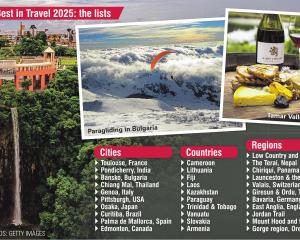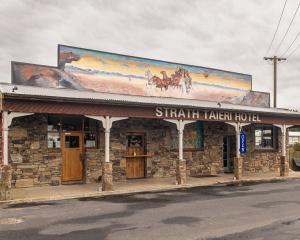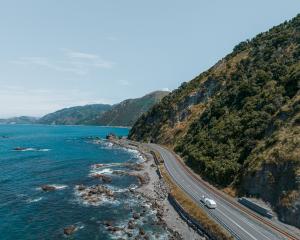
Come to Portugal's world-famous Nazare during surf-mad October and you will see the best swell of your life, international heavyweights dwarfed by mind-blowing waves and surfing pros and wannabes rubbing shoulders on wide open shores.
On a foggy day in a rainy June, not so much.
Our early-summer visit to the monumental surf capital feels nothing like summer, fog shrouding the lighthouse from where monster waves are usually seen, and no surfers in sight.
But an undercurrent of adrenaline remains, as Nazare reminds of its reputation as an international surfing arena and keeps delivering those crazy-mad photos of surfers taking on unbelievable waves.
It was eight years ago that everything changed for Nazare, when famous big-wave surfer Garrett McNamara arrived, having been invited by Nazare bodyboarder Dino Casimiro. McNamara later described the casual nature of the encounter to international surfing media, saying "a local surfer emailed me a picture of it and asked me if I'd come ride his waves".

Then in 2011 McNamara caught a wave of 24m, beating the world record for the biggest wave ridden.
It catapulted Nazare on to the international news and transformed the until-then sleepy fishing town and holiday getaway into the most famous surfing spot in the world.
Local surfers and bodyboarders who used to have the waves to themselves were immediately joined by an influx of surfers from various corners of the planet, and several years later the WSL Nazare Challenge - the first Big Waves Tour from the World Surf League to be held in Nazare - took place, in 2016.
Now casual surfers and those competing cover the waves, particularly every European autumn, when the World Surf League's annual Nazare Challenge is still held.
Two beaches flank either side of a small peninsula and it's Nazare's north beach, with its canyon and reportedly "angrier temperament", that has the best conditions.

"It breaks every day of the year; it's outta control. It's the most consistent wave I've ever seen and the most consistently big wave."
Geologically, the great surf is no surprise.
Nazare's rare undersea geography features a deep submarine canyon that points like an arrow toward the town. At its deepest, the Nazare canyon is estimated at almost 5000m. By contrast, the Grand Canyon in Arizona is about 1800m deep at its lowest point.
All the excitement has a more sedate focal point for visitors at the lighthouse overlooking the "praia do norte" (north beach).
The lighthouse has been turned into a surf museum that features excellent displays about the world's best surfers, information panels often sitting along actual surfboards they used.
Nearby in Nazare's upper town (called "O Sitio"), tourist-friendly stalls feature souvenirs that are both corny and cute: desktop surfboards and postcards, and miniature dolls featuring the colourful "seven skirts" worn by traditional fishermen's wives.

Seafood features predictably in the local cuisine.
Fresh fish is doused with rock salt and olive oil and then either grilled and served with pots of potatoes and a simple lettuce, tomato and onion salad, or piled into huge pots for a steamy "caldeirada", a hearty tomato-filled fish stew, similar to the French bouillabaisse and accompanied always with a basket of fresh, crusty, peasant-style bread.
The whole scene has both an easy and exciting vibe.
The only thing to remember is that age-old surfing edict, scrawled on signs at some of the Nazare beaches: visitors are welcome and encouraged, but when you are surfing the waves, remember to always "respect the locals".












